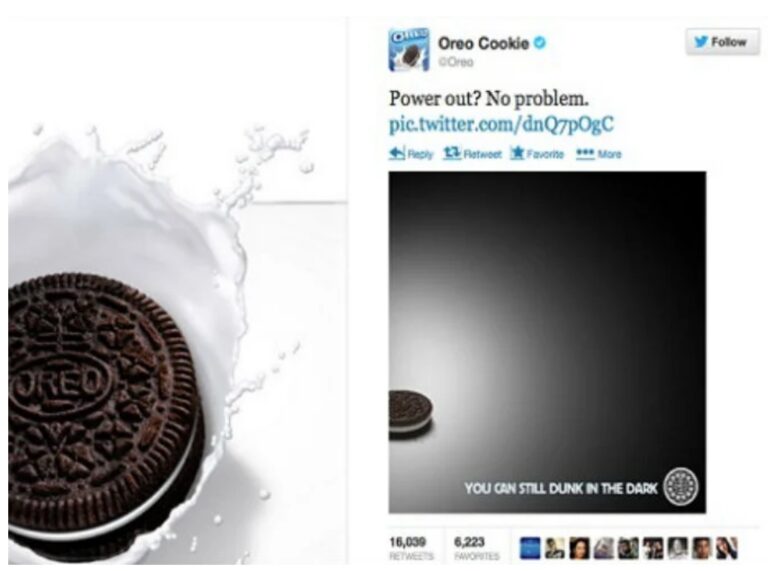Real Time Marketing’ is marketing based on up-to-date – real time – events. You may remember Oreo’s “You can still dunk in the dark” social media post from the 2013 Super Bowl power outage. Oreo’s social media team’s fast thinking resulted in over 10,000 Retweets and 20,000 Likes on Facebook.
Other examples of real time marketing include:
• Triggered emails (emails that send when users take a specific action)
• Social media engagement (customer service responses)
• Coverage for breaking social media events
• Live event promotion (tradeshow or conference coverage)
• Location-based deals (deals that appear when a user is at a specific location)
1. Speed
This one is obvious given it is called ‘real time’. It’s about being able to respond to something at the moment of engagement, such as the Oreo example, or responding to a complaint via Twitter.It can be very powerful in both a positive or negative way. A quick response to a customer complaint is a positive example, and I saw this from Jet Blue. A customer tweeted about how frustrated they were about their flight being delayed. Jet Blue responded with up-to-date information and sympathy for the situation.
I experienced a negative example. I was flying to Hong Kong, and stretched and felt an unfamiliar lump on my back. As soon as I got to the hotel I checked and found a mole I had not seen before. Like anyone, I immediately Googled ‘melanoma’ to compare that with my new mole. Within minutes I got a text on my mobile phone that invited me to a talk on melanoma – near my home 6000 miles away. Since I had not entered any details about myself, I could see that Google had connected the information I entered using Chrome and merged it to form a very detailed picture about me and sold that information to the people doing the talk. This all happened within minutes.
2. Personalization, Customer Service and 24/7 Treatment
3. Relevance
4. Omni-channel Optimization
1. Get The Technology Infrastructure In Place. You need to combine all the data you have (structured, unstructured, semi-structured), clean it, and integrate it into a uniform format (in real time). Next, add a temporal element to it and apply appropriate AI analytics to the real time data in order to give you the insights you need. You require a technology that’s scalable and modular so you can get going with the data you have, but when you add new formats of data and new functionality, that can be programmed into the system also. Without being able to integrate everything together, you will end up with platforms of siloed data, and that is not going to give you all the power you need.
2. Move Your Real Time Marketing from One Social Media Channel (Twitter is the most commonly used RTM channel) to multiple channels from all data sources. In Pharma, this can be in CRM systems, web content automation software and more.
3. Optimize. Don’t be scared of AI algorithms. Take advantage of them. However, AI is not magic; you need the right data, the right algorithms (one size does not fit all data) and the right business decisions to be planned and made from the results. It is sophisticated, and as with anything sophisticated, you need to have the right team doing the strategy, the AI algorithms, the data cleaning and the programming. The algorithms learn with more data, but adding new forms or data and new functionality requires work. Keep improving.
Studies show that when conducted properly, real time marketing can provide better customer experience and customer engagement, improved customer retention, increased sales, and better brand perception.
If you’re ready to see how you can incorporate real time marketing into your Pharma brand, Eularis.com will be happy to have a confidential discussion with you.
Found this article interesting?
To learn more about how Eularis can help you find the best solutions to the challenges faced by healthcare teams, please drop us a note or email the author at abates@eularis.com.

